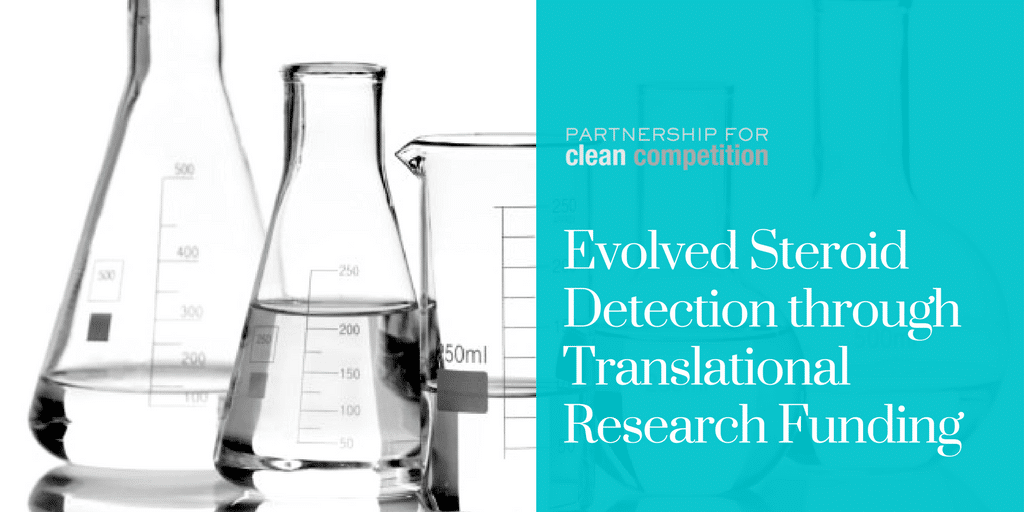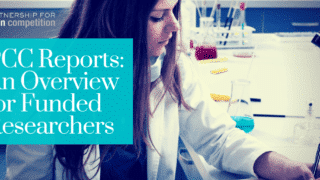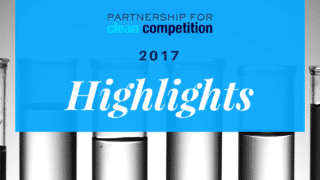This article also featured in the PCC’s 2017 Fall Newsletter.
In 2008 Dr. Tom Brenna at Cornell University was awarded the PCC’s first grant for a project entitled “Characterization of the Human Urinary Steroidome for Anti-Doping Applications.” The project’s ambitious aim was to improve the efficiency with which labs can detect steroids in urine by enabling the characterization of the whole profile of steroids in urine, compositionally and isotopically.
More specifically, Dr. Brenna’s research would enable the coupling of comprehensive 2D gas chromatography (GCxGC), an advanced chemical separation technique, with isotope ratio mass spectrometry (IRMS) for carbon isotope ratio (CIR) analysis in 2D for the detection of synthetic steroids. The development would not only reduce the laborious sample preparation currently limiting molecular and CIR analysis of human urinary steroids for anti-doping tests, but combining the scientific techniques would offer the prospect of wide scale, highly precise isotope analysis of steroids – as well as detection of other possible doping agents excreted in urine.
Dr. Herbert Tobias, who also works on the project and is now Associate Professor at the Dell Pediatric Institute at the University of Texas (and the primary investigator for the research since 2015), puts the project’s goals in perspective: “We are trying to develop tests that can be implemented easily in all labs so they can do the best isotope test for every urine sample. We will also develop well characterized standard materials that the anti-doping laboratories use to harmonize results.”
In addition to methodology, work has been done to microfabricate more robust on-line high temperature reactors to replace the fragile ceramic-based reactors normally in use and required for combustion of separated steroids.
However, the microfabrication research ran into an unexpected problem: despite proof of concept by utilizing the reactors at low temperatures, use at higher temperatures presented issues. Per Dr. Brenna, while the methodology was sound, “with available technology we were not able to make reliable connections at the high temperatures required for steroid analysis.”
The project stalled.
Nevertheless, understanding the important impact the research could have on the anti-doping framework, Dr. Brenna and Dr. Tobias were not deterred. Research in highly impactful areas continued while solutions to the project’s technological obstacles were sought: “This research has a two-item portfolio of projects,” stated Dr. Brenna, “a low risk one (for us, because we know how to do this) for isotopic standards, and a high risk, never attempted steroidome one. The isotopic standard one kept us engaged and enabled us to make a scientific contribution, whereas the steroidome one we keep pecking away at.”
But additional resources were required to spur the next evolution of the project. The PCC’s newly created Translational Research Fund (TRF) was the ideal solution. Michael Pearlmutter, the PCC’s Executive Director, explains why the steroidome project was a natural fit for the TRF: “The obstacles experienced in this situation were not methodological in nature; Dr. Brenna and Dr. Tobias could have circumnavigated any such barriers expertly. What was needed is collaboration with a technology company that can build a combustion reactor able to handle the unique demands of Dr. Brenna’s scientific process. The implementation of novel research outputs often requires expertise, technology, and resources outside of the daily scope or interest areas of our primary investigators. Sourcing and connecting PCC scientists with such external assets is precisely what the TRF was created to achieve. This project is an ideal candidate for such funding.”
So where is the project now? According to Dr. Tobias, after receiving additional funding through the TRF, “We have made great strides in method & instrument development that benefit the anti-doping laboratories. Through collaboration with Activated Research Company we have created a prototype low temperature (<500oC) catalytic combustion reactor to convert organic materials to CO2 and water for carbon isotope ratio (CIR) measurements used in synthetic steroid detection. The reactor should reduce complexity, improve robustness, and address flow connection issues associated with high temperature (>900oC) reactors currently employed in these systems.”
Preliminary characterization for CIR shows promise, and Dr. Tobias has already been awarded funding through the TRF to thoroughly characterize the new on-line chemical technology, and tweak the chemistry with the project’s industry collaborators.
The aim of the TRF is to provide the unique and meaningful support required to help scientists apply their research to a real-world laboratory setting. In the case of the TRF’s inaugural project, the PCC is proud to be on track with that aspiration. Per Dr. Tobias, “The PCC Translational Research Fund has been very important to catalyze collaboration and innovation in new chemistry and instrumentation technology that will advance techniques in the anti-doping laboratories. The fund helped start a new, more intensive project to develop and advance low temperature combustion… The PCC is excited to continue support for this exciting, important research. The PCC’s newest program, the Translational Research Fund, aims to both identify and support the implementation of PCC research with a high potential for impact on the anti-doping framework. Support may include the funding of additional studies, the identification of opportunities for commercialization of research, the evaluation of new technology for licensing potential, the development of patent applications, and work with inventors to expand, license, or extrapolate their findings. If you have a project that may benefit from a TRF award, please email Jenna Celmer at Jcelmer@cleancompetition.org




